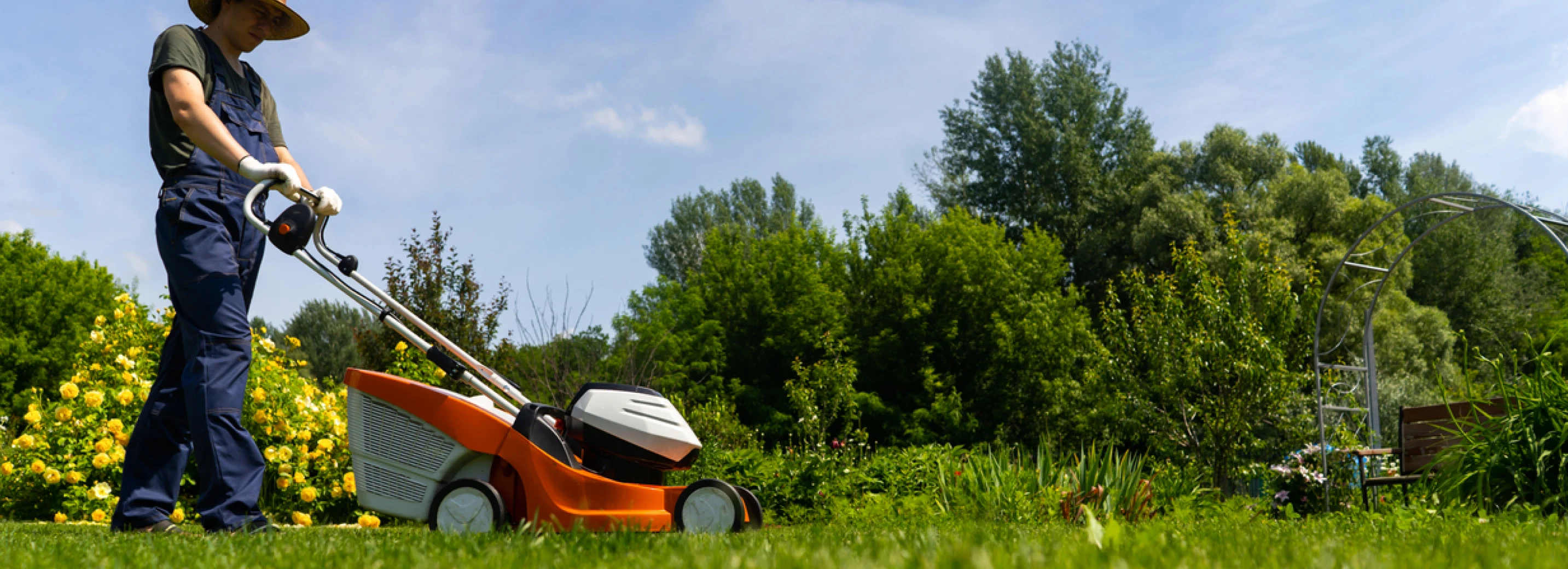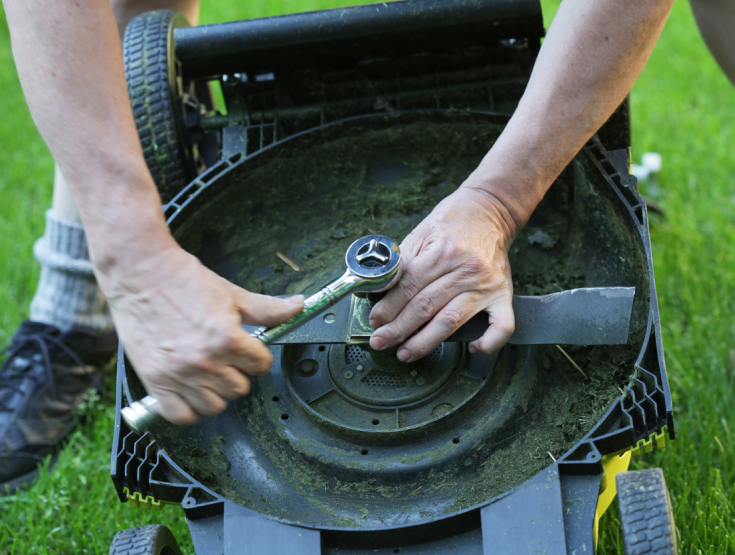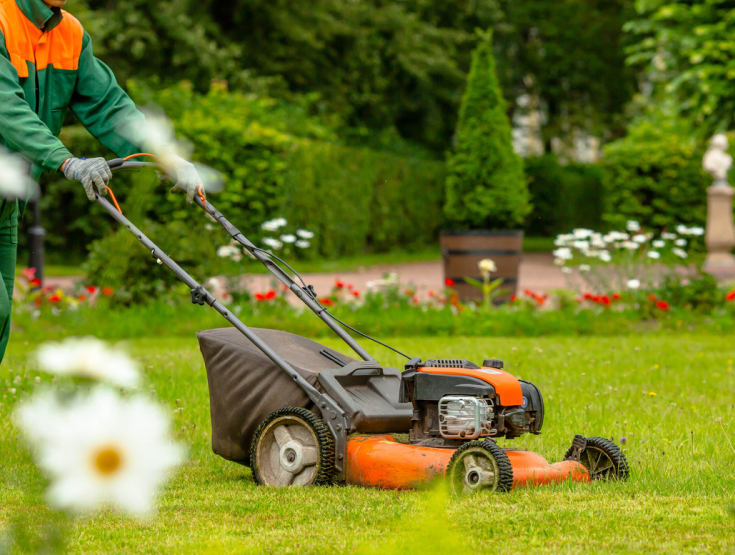Lawn mower upkeep doesn’t have to be complicated or time-consuming. With a regular maintenance schedule in place, you’ll catch small issues before they become major repairs — and you’ll keep your lawn looking professionally maintained.
Here’s a breakdown of what to check and when:
Before and After Each Use:
- Inspect blades for damage or dullness: Look for chips, nicks or uneven wear.
- Clear the mower deck of stuck-on grass and dirt: Built-up clippings can block airflow and dull blades faster.
- Check fuel and oil levels: Running low can strain or damage your engine.
- Wipe down surfaces: This prevents corrosion, especially if your mower is stored outdoors or in a humid space.
These regular checks take just a few minutes and can greatly extend the life of your equipment.
Monthly:
- Check the air filter: A clogged air filter reduces airflow, making the mower work harder and use more fuel.
- Inspect the spark plug: Dirty or corroded plugs can make starting your mower difficult and reduce engine efficiency.
- Clean under the mower deck: Use a scraper or stiff brush to remove caked-on debris that can affect airflow and performance.
- Examine tires: Uneven wear or low pressure can cause scalping or missed patches while mowing.
Monthly maintenance helps identify performance problems early, giving you time to fix them before they interrupt your mowing schedule.
Seasonally:
- Change the oil: Fresh oil improves lubrication and helps your engine run cooler and cleaner.
- Add a fuel stabilizer: This prevents old gas from breaking down and gumming up your fuel system over the winter.
- Inspect mower belts and cables: Look for fraying, cracking or signs of wear that could lead to breakage mid-mow.
- Check battery health: For electric or battery-powered mowers, make sure the battery holds a charge and has no corrosion.
Pro Tip: Make sure to disconnect the spark plug or remove the battery before doing any maintenance to avoid accidental starts or injuries.
These seasonal steps are especially important before putting your mower away for winter or pulling it out for the first mow of spring.
Annually:
- Sharpen or replace blades: A sharp blade makes a clean cut that helps your lawn heal faster and look better.
- Deep clean the entire mower: This includes removing covers, checking tightness of bolts and cleaning vents and cooling fins.
- Review the owner’s manual: Every mower model is different — follow manufacturer guidelines for best results.
Pro Tip: Always disconnect the spark plug or remove the battery before doing any maintenance to avoid accidental starts or injuries.


 Branch Finder
Branch Finder
















 Back to all blogs
Back to all blogs

Facebook
X
Youtube
Copy Link
Email